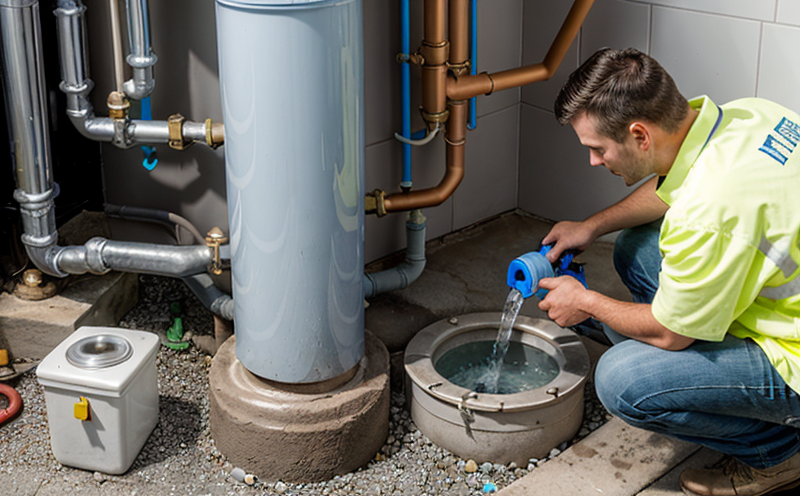EN 12201 Plastic Piping Systems Testing
The EN 12201 standard is a European Norm that specifies the requirements and methods for mechanical testing of plastic piping systems. This service ensures that plumbing fixtures, fittings, and associated products meet stringent quality standards before they are used in construction projects.
EN 12201 covers a range of tests including hydrostatic strength, burst pressure, flexural modulus, elongation at break, and other mechanical properties critical to the durability and safety of plastic piping systems. This testing is essential for ensuring that plumbing fixtures and fittings are robust enough to withstand environmental conditions and daily use in residential, commercial, and industrial settings.
During the hydrostatic strength test, a sample pipe or fitting is subjected to a specified pressure over a given time period. The burst pressure test determines the maximum internal pressure at which the specimen fails. Flexural modulus measures how much a material can be bent before it breaks, while elongation at break assesses the material’s flexibility and toughness.
For accurate testing, specimens must be prepared according to EN 12201 guidelines. This includes ensuring that the samples are free from defects, properly cleaned, and conditioned to specified environmental conditions prior to testing. The use of appropriate instrumentation is crucial for obtaining reliable results; this may include pressure gauges, load cells, tensile testers, and other specialized equipment.
The test parameters vary depending on the type of plastic piping being tested (e.g., PVC, PE, CPVC) and its intended application. For instance, a residential water supply system might require different mechanical properties than an industrial chemical transport pipeline. Compliance officers and quality managers should familiarize themselves with these differences to ensure that their facilities meet all relevant standards.
Compliance with EN 12201 is vital for maintaining product integrity and safety throughout the lifecycle of a plumbing system. By adhering to this standard, manufacturers can provide assurance that their products will perform reliably under various conditions. This not only protects consumers but also contributes positively to the reputation of the company.
Applied Standards
- EN 12201:2004: Mechanical properties for plastic piping systems used in building and civil engineering applications.
- ISO 5837-1:2016: Piping systems – Plastic pipes and fittings for the conveyance of water for drinking – Part 1: General principles.
International Acceptance and Recognition
The EN 12201 standard is widely accepted across Europe and many other parts of the world due to its rigorous testing protocols. It ensures that plastic piping systems are suitable for use in diverse climates and conditions. Laboratories accredited under this standard have been recognized by organizations such as ASTM International, British Standards Institution (BSI), and others.
- ASTM F1690: Specification for pressure piping made of high-density polyethylene (HDPE) used in building and civil engineering applications.
- BS EN 12201:2004: Mechanical properties for plastic piping systems used in building and civil engineering applications.
Environmental and Sustainability Contributions
Testing conducted according to EN 12201 helps promote sustainable practices by ensuring that plumbing fixtures and fittings are durable, efficient, and reliable. Durable products reduce waste and the need for frequent replacements, which is beneficial from an environmental perspective.
- PVC Pipes: Polyvinyl chloride (PVC) pipes have excellent chemical resistance and low permeability to water vapor, making them ideal for long-term use in various environments.
- PE Pipes: Polyethylene (PE) pipes offer good abrasion resistance and flexibility, allowing them to be used in flexible applications where rigidity is not required.





